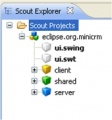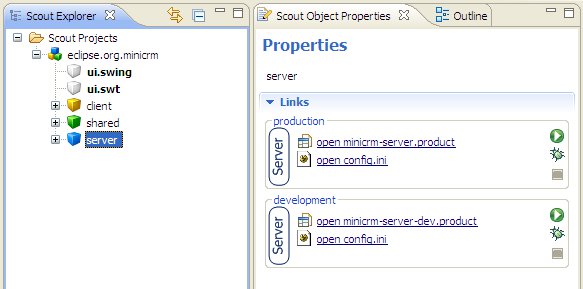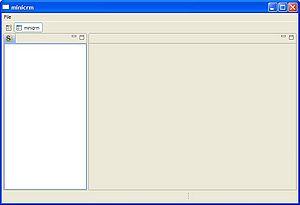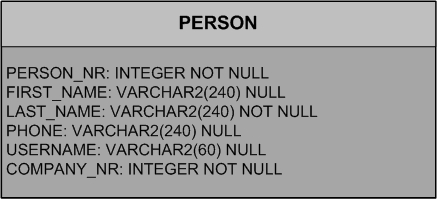Notice: this Wiki will be going read only early in 2024 and edits will no longer be possible. Please see: https://gitlab.eclipse.org/eclipsefdn/helpdesk/-/wikis/Wiki-shutdown-plan for the plan.
Difference between revisions of "Scout/Tutorial/3.7/Minicrm Step-by-Step"
| Line 18: | Line 18: | ||
# Start Server: Click on the server node and start the ''development'' server product by clicking on the green arrow. | # Start Server: Click on the server node and start the ''development'' server product by clicking on the green arrow. | ||
| − | [[Image:ServerProduct.jpg]] | + | [[Image:ServerProduct.jpg]] <br clear="all" /> |
| − | # Test Server: To test if the server is running properly, go to http://localhost:8080/minicrm/process. To log in, use admin as username and manager as password. There you should see a page with information about the server. The login information is defined in the config.ini file of the server product, click on ''open product'' and then change to the ''configuration'' tab in order to open it. [[Image:ServerProductConfiguration.jpg]] | + | # Test Server: To test if the server is running properly, go to http://localhost:8080/minicrm/process. To log in, use admin as username and manager as password. There you should see a page with information about the server. The login information is defined in the config.ini file of the server product, click on ''open product'' and then change to the ''configuration'' tab in order to open it. [[Image:ServerProductConfiguration.jpg]] <br clear="all" /> |
| − | # Start Client: Click on either the ''ui.swing'' or the ''ui.swt'' node and start the ''development'' client product by clicking on the green arrow. | + | # Start Client: Click on either the ''ui.swing'' or the ''ui.swt'' node and start the ''development'' client product by clicking on the green arrow. When asked for a login, enter the same login information as before, admin/manager (or any other user/password pair from the config.ini). An empty application window should appear. |
| + | [[Image:Minicrm.jpg|thumb|left|The empty application window]] <br clear="all" /> | ||
== Add the SqlService == | == Add the SqlService == | ||
Revision as of 19:28, 24 March 2010
Contents
Prerequisites
- Have a look at the EclipseScout Client Component Model: Main Concepts
Installation / Set Up
Create a new EclipseScout project
- If you haven't done so yet, change to the Scout perspective. On the folder Scout Projects, right click and choose New Scout Project in order to create a new Scout project. As project name, enter eclipse.org.minicrm.
- Start Server: Click on the server node and start the development server product by clicking on the green arrow.
- Test Server: To test if the server is running properly, go to http://localhost:8080/minicrm/process. To log in, use admin as username and manager as password. There you should see a page with information about the server. The login information is defined in the config.ini file of the server product, click on open product and then change to the configuration tab in order to open it.
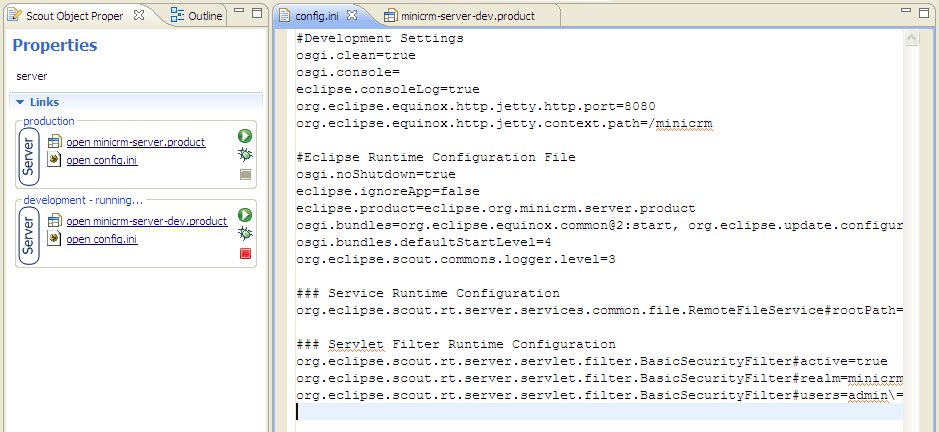
- Start Client: Click on either the ui.swing or the ui.swt node and start the development client product by clicking on the green arrow. When asked for a login, enter the same login information as before, admin/manager (or any other user/password pair from the config.ini). An empty application window should appear.
Add the SqlService
- New SqlService...
- The DB
Create an Outline
- New Outline
- New Table
- Add Columns
- getConfiguredDisplayable vs. getConfiguredVisible
- Get Data for Table
- BindBases
Create a Form
- New Form
- FormHandler
- ProcessService
- FormData
- SQL.selectInto
Start the Form
- New Menu
- execAction
Modify the Form
- Validation
- Formatting
- Changing Background or Foreground
Extend the Form
- Smartfield
- HtmlField
- Button
Create a SearchForm
Expand the Tree
- NodePage
Bing Webservice
- Scope
- execLoad
- Add variables



